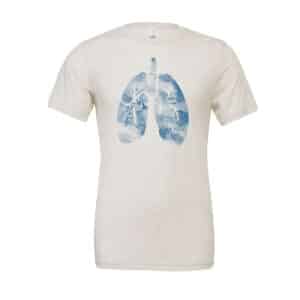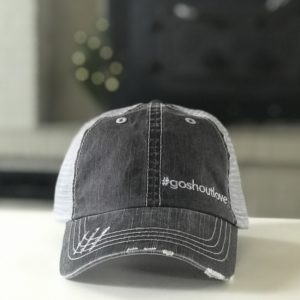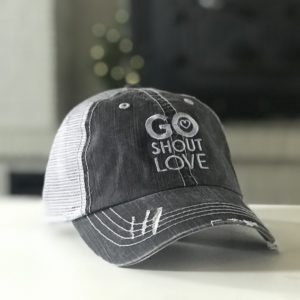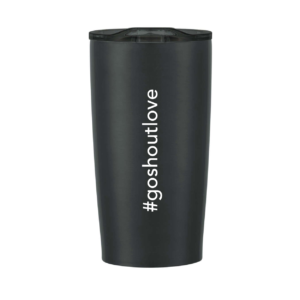Meet Teddy
Teddy is a happy, determined, and strong-willed boy from Omaha, NE. He loves playing with O-Ball toys, snuggling with those he loves, and PB&J sandwiches.
We invite you to watch Teddy’s video, read his story and subscribe to our podcast to listen to an interview with his mom & dad.
Prior to Teddy’s arrival, Liz and Matt experienced two heartbreaking miscarriages. When Liz was pregnant with Teddy, the couple was elated to make it past 8 weeks. At a prenatal appointment, after deferring the blood draw for Mat21 testing, the reproductive endocrinologist was concerned about extra fluid around their embryo and the potential for abnormal genetics. She gave the couple the option to wait a few weeks and come back for an ultrasound or to transition care to a Maternal Fetal Medicine specialist (MFM). Liz and Matt couldn’t wait a few weeks to come back and were able to get an appointment with the MFM later that week. “Waiting for that appointment was hard,” Liz remembers. A repeat ultrasound showed less fluid and they proceeded with non-invasive testing. Within two weeks, the non-invasive testing showed no concerns and they were settled into a routine. They chose to see the MFM for all prenatal care as Liz’s usual OBGYN was set to be on maternity leave at the time of delivery. They formed a great relationship with their MFM and they cruised through appointments for the rest of the pregnancy. The couple loved the extra TLC they received after their previous losses.
The only issue that arose was Teddy’s breech positioning. They attempted an external version, but he remained breech. They scheduled a c-section at 38 weeks due to Liz’s continued hypertension. Liz and Matt were excited to meet their baby and find out the sex. They were surprised that they had a baby boy and named him Theodore, a name they had loved since they were first married.
Teddy weighed 8 lbs 10 ounces at 38 weeks. He required glucose checks, could barely keep his temperature the first 12 hours and grunted that entire time. As a Neonatal Nurse Practitioner, Liz was terrified. However, they made it out of the hospital and things were settling in. “Teddy was a dream newborn. His squishy, previously breech body just melted into you, he barely cried and we were infatuated with him.” Liz shared. They struggled with breast-feeding, but Teddy did great with bottles and gained weight well.
Through Liz’s maternity leave, he continued to be the best little snuggler but some little signs started to raise flags, like not seeing smiles. At 8 weeks old, Teddy had an outpatient surgery for an undescended testicle and an inguinal hernia. By 3 months old, Teddy had his first ear infection, in which they were in the emergency room because his irritability was out of proportion for his age. They battled continued ear infections until his first set of tubes around 6 months old. By then, Teddy still had no head control, struggled with tummy time and still melted into Liz and Matt around the clock.
Through the first year, it was milestone after milestone missed. No rolling over, no sitting up, no babbling, the most intense startle reflex and he was still the best snuggler. Liz and Matt spoke to their pediatrician, who kept saying he’s just behind, but he’s making progress so that’s what mattered. After his 9-month check-up, Liz requested a physical therapy evaluation and started the process with Early Development Network. Liz recalled, “I remember a good friend approaching me about his continued delay and his need for services. My mama heart was broken. I felt like I was trying to get many things lined up and wading barely above water. I felt attacked. I felt like I wanted and needed to protect him fiercely.”
By 10 months old, Teddy had a physical therapy evaluation and the therapist was top notch. She went through the aspects that were concerning and they made a plan. At 11 months old, Teddy had his adenoids removed because he was continually obstructing while sleeping. “His snoring was so ‘cute’ but also I was terrified putting him down to sleep”, Liz shared. His first set of tubes fell out after his adenoid removal. By Thanksgiving of 2018, he also had RSV and the start of a continued ear infection until new tubes after Christmas. The day after Christmas, Teddy got his second set of tubes.
At his one-year pediatrician appointment, Liz was blindsided by their pediatrician saying he needed to be seen by a Neurologist. They met with the Neurologist in March of 2019 and she requested genetic testing. She talked about Teddy’s slow but continued progress. She ordered a brain MRI as well. In the waiting for insurance approval, they were able to get his brain MRI scheduled for April 2, 2019.
The morning of April 8, 2019, Teddy had his first seizure at home. Liz walked into Teddy’s room to find him covered in drool. He was breathing but unresponsive to her interaction. Liz called 911. During the ambulance ride, he transitioned to a period of head thrashing and then to complete exhaustion by the time they got to the ER. By 5 hours post-event, he was still very tired, and he required observation on the short stay unit. Teddy had a 1-hour EEG that afternoon while awake that didn’t show any concerns. On May 6th, Liz received a phone call from the Neurologist saying that Teddy had a duplication on Chromosome 15 and recommended seeing a geneticist. Liz and Matt were crushed.
Liz and Matt spent the next few weeks working to get a new Neurologist and also got connected with the Dup15q Alliance page. They secured Teddy’s first 24-hour EEG with the new Neurologist in July. They started Trileptal after this EEG due to lots of epileptiform discharges but no actual activity. They were convinced his nightly head banging was connected to seizure activity, but that was not the case.
By the end of July, Teddy’s night waking had continued to increase with intense episodes of teeth grinding with whole body twitching. By August, they traveled to St. Paul, Minnesota to meet the Minnesota Epilepsy Group team and for an inpatient stay on a dedicated Neuroscience floor. The night before their admission, Liz remembers waking with Teddy next to her and trying to comfort his shaking body and praying for a few more hours of sleep. “Deep down I knew something was terribly wrong. That admission answered so many questions but left us with intense fear,” Liz shared.
Teddy was diagnosed with epileptic spasms, formally known as infantile spasms, minus the fact that Teddy was over 1 year of age. They started Depakote with a plan to wean off the Trileptal. The start of Depakote seemed promising until a week and a half in, Teddy was lethargic and vomiting.
Liz and Matt were at a cousin’s wedding in the beginning of September and Teddy slept most the day and vomited every meal. They checked with their epilepsy group and they recommended getting lab work to check his ammonia level. By Tuesday night, Liz called a local Neurologist and she immediately referred them to the Emergency Room. They were admitted and the team debated on what to do next, the next drug choice, and when to give rescue medications. All while trying to not abruptly wake him since that’s when the spasms are the worst. “So many times, people would wake him and then try to give him Ativan to calm the spasm and then he would slip into a drug-induced sleep. The statement ‘advocate like a mother’ fell so true during this admission. Trying to get medical teams to talk and listen. Trying to be a part of the team. Trying to share what info we had of Dup15q kids and epilepsy.” Liz recalled.
Teddy received multiple loading doses of Keppra with no change. He started on maintenance Keppra dosing. They finally started Topamax after 4 days in the hospital. They also started to wean the Trileptal because his focal seizures were becoming really intense. They increased the Topamax over the coming weeks and headed back to Minnesota the beginning of October. No improvements in his EEG led to trying a high dose steroid burst, which also led to no change in seizure activity.
The end of October brought the start of Felbamate after screening Teddy for antibodies to screen for aplastic anemia risks. Through this time, his cluster activity waxed and waned. Some mornings required more planning and weighing the options on how to wake him up, keeping him awake and balancing to get him ready for daycare. “Every morning was a complete gamble,” Liz shared.
In November, they were trying to stay afloat. Teddy added hippotherapy to his regimen for outpatient therapy and he started on their horse named “EQ”. He amazingly tolerated his first 30-minute session and hasn’t looked back. He rides each week with his OT and their team of volunteers.
The beginning of December, they traveled to Minnesota again. Teddy’s EEG remained the same with continued spasm activity with too many to count episodes. They were introduced to Vigabatrin (formerly known as Sabrel) as the next drug of choice. From the moment they started the Vigabatrin; Teddy started to improve. He wasn’t clustering at every waking moment. They were decreasing his Topamax while increasing the Vigabatrin. They were given a 16-week weaning plan for Topamax. Teddy spent the month of December usually sleepy by the weekends, waiting for a wean in his Topamax medication after the previous Vigabatrin increase. Teddy even slept through his second birthday party.
Liz and Matt felt like 2020 was going to be the answer. They followed the schedule and continued to fine tune medications, increasing in small increments until he maxed out each drug. January and February were quiet months, always playing a balancing act of medication increases while weaning the Topamax medication and an ear infection.
In March, Liz took Teddy to Minnesota for a visit with a 1-hour EEG. By April, with the Topamax weaning being slow, they introduced Banzel since his activity was increasing again but he couldn’t be on both Vigabatrin and Topamax. The Banzel addition seemed to be working. By the end of April, Teddy was finally off Topamax.
The month of May seemed to be Teddy’s best one yet. Teddy had an outpatient surgery that was cancelled in March. He did great with anesthesia and got a new set of tubes, thanks to an outstanding ENT doctor. His low muscle tone means less time upright and he’s more prone to ear infections. By the end of May, Teddy had recovered.
They family had a recent concern about extensive bruising on Teddy’s legs from knee to foot. They needed to rule out aplastic anemia. They discovered an iron deficiency instead of bone marrow failure. This changed Teddy’s medication, but they are back on track to return to the previously discovered sweet spot.
Time to get loud shouters!
Throughout the month of August we will be shouting love for Teddy and his family. It is a great honor to be able to tell Teddy’s story and we hope you will join us in getting to know him and his family.
So click here to shop now where every purchase in August will be used to help purchase a sleep safe bed for Teddy. You can also start a monthly subscription and shout love for great kiddos like Teddy each month!






































































